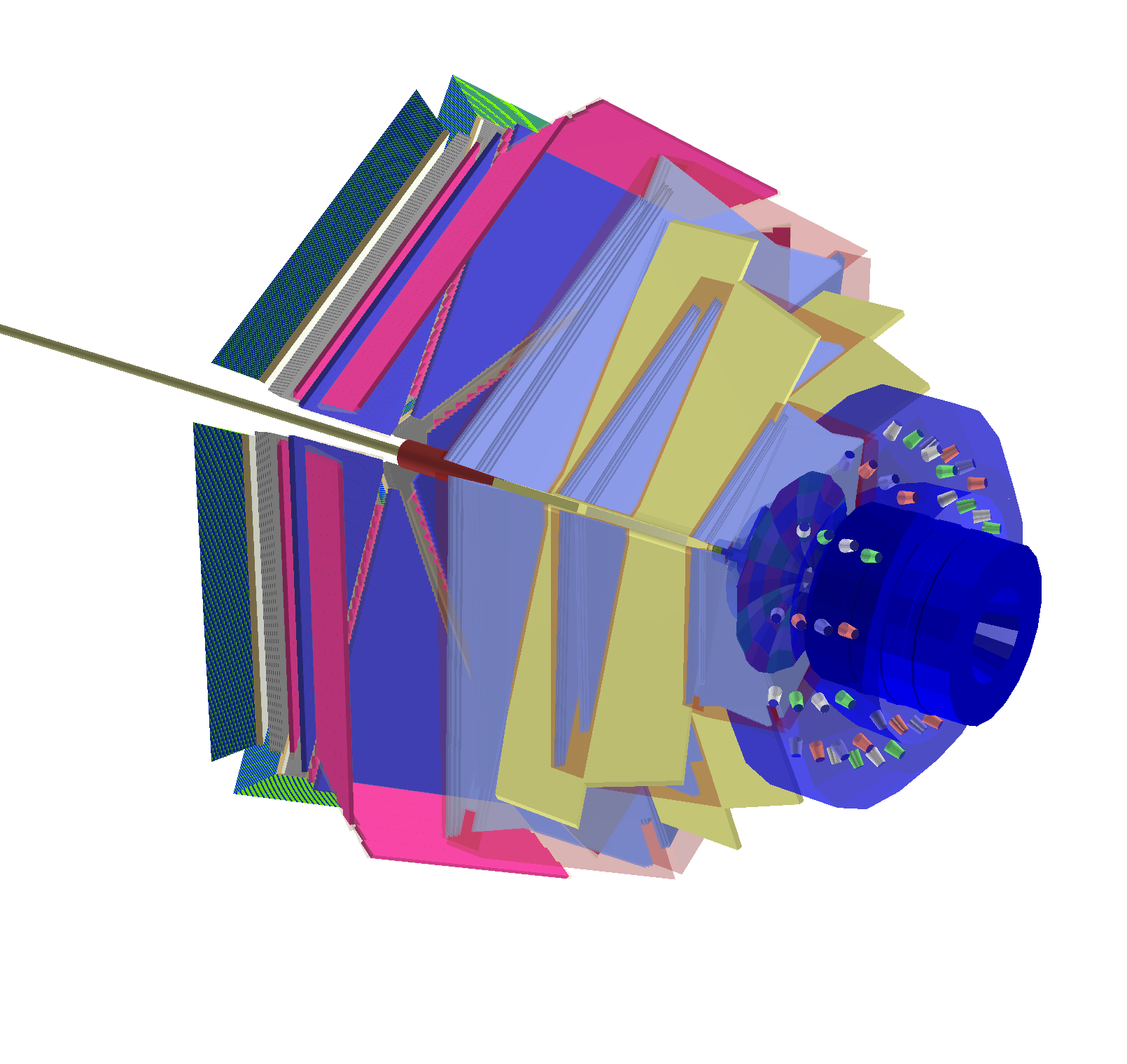###A Python Geometry package for Gemc
This is a package that allows you to author and check Gemc geometry from a bit of Python code. It allows you to use the full computational prowess of Python and all it's packages to define your geometry and then write out the result as either Gemc txt files, or write to a database, or render the result in ROOT. Other input/output options can be added if needed.
The code also allows you to import a Gemc txt file, then view the geometry in ROOT, and write it all out as a skeleton Python code for further manipulation.
To learn to use the package, checkout the interactive Python Notebooks: index.ipynb and Tutorial1.ipynb. You can view these with GitHub if you click on them in GitHub. If you open them as a Jupyter Notebook, you can change the Python lines and see how this affects the output of the code. You can also zoom and rotate the ROOT picture. The index.ipynb tells you how to install Jupyter Notebooks on your own system, and where to find it at JLab.
The sections below give an introduction for different features of the ShowRootGeometry.py script.
The executable Python script "ShowRootGeometry" is a simple front end for the GeometryROOT class. It is a convenient way to load a Gemc txt file and then display the resulting geometry in a OGL ROOT window. You can see in the script itself that this is accomplished with just a few lines of code.
From the command line (make sure ROOT is setup properly) you just type:
./ShowRootGeometry.py clas12__geometry_original.txt
The program will read the geometry file and then render it. It will also start a TBrowser. In the TBrowser, you will find the rendered geomerty tree under the "GEMC" folder. Double click on "GEMC", and then each lower object to see the whole tree. Setting or unsetting the check mark will make the object visible or invisible. For the expert: In your terminal, you will be dropped back to a Python prompt. This is a fully interactive Python shell, with the full geometry in a GeomertyROOT object which is named "rr". You can add new objects, make existing object invisble, etc, all from the command line. When you are done, just type quit(), or Crtl-D in the terminal. One useful option is to use "-m vol_name" to make "vol_name" the mother volume, and thus only render that volume and all daughters. This can really simplify your viewing if you only want to see a part of the detector.
We can now use the ROOT geomerty engine to check for overlaps. In the terminal we tell ROOT to check for overlaps, with 0.001 accuracy:
>>>> ROOT.gGeoManager.CheckOverlaps(0.001)
ROOT will then report on overlaps and extrusions. Another useful overlap check is to draw a particular volume with random points. If the volume is called 'my_vol' then the command is:
>>>> rr._volumes['my_vol'].RandomPoints()
